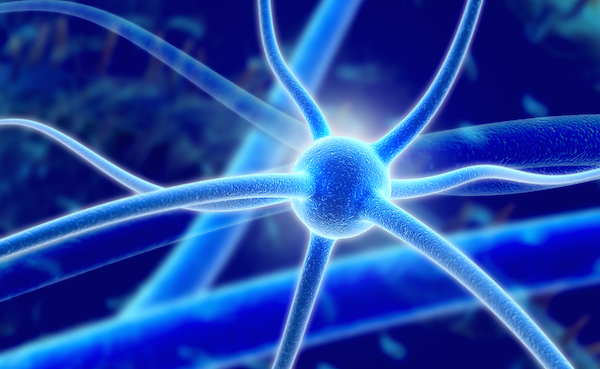
SATURDAY, Jan. 29 (HealthDay News) — An advisory panel to the U.S. Food and Drug Administration decided on Friday that electroconvulsive (also known as “electroshock”) devices should be subject to the same tough testing as other medical devices entering the market.
The much-awaited decision is the latest chapter in the decades-old controversy surrounding the psychiatric treatment, which some patients see as doing great harm, even as others hail it as a valuable treatment.
The FDA doesn’t have to follow its advisory committees’ recommendations but usually does.
The panel’s decision was endorsed by those worried about the potential harms of electroconvulsive therapy (ECT).
“It was the best possible outcome we could have gotten,” Austin, Texas-based clinical psychologist John Breeding told the Washington Post. Breeding, a longtime opponent of the procedure, testified before the panel at a two-day meeting that began Thursday in Gaithersburg, Md.
The panel heard testimony from both ECT patients and FDA researchers who pored over hundreds of studies into the therapy. According to the Post, the FDA staffers said that current research suggests ECT does outperform placebo or “sham” ECT and after a month it may also outperform antidepressants.
But on the other hand, the FDA review of data also found that the treatment was tied to “impairment in orientation, memory and global cognitive function immediately after ECT and up to six months,” the Post reported, although many aspects of memory do seem to return to normal after another six months.
Supporters of electroshock had lobbied for the devices to be downgraded to a medium-risk classification, which would put the devices in the same category as syringes and allow them to be sold without new testing.
The advisory panel did not support such a move, and their recommendation might push the FDA to require manufacturers to demonstrate that the devices are safe and effective, something it has not previously done. Some say the tests that such proof would require would be prohibitively expensive for the device makers.
The American Psychiatric Association has supported a downgrading in classification, while opponents argue that electroshock therapy can cause long-term brain damage, including memory loss, according to The New York Times.
“It’s a treatment for the most severe form of depression,” Dr. Charles Kellner, chief of geriatric psychiatry at Mount Sinai School of Medicine in New York City, told the Times. “It can really be lifesaving.”
Dr. Edmi Y. Cortes, director of psychiatric services at the University of Miami Hospital, said that today’s electroconvulsive therapy (ECT) devices are both safe and effective. “It’s beneficial that some of the leading experts in psychiatry and ECT are getting together with the FDA to finalize a consensus,” she said.
“The devices are effective when used appropriately,” Cortes said. “For the most part, they are used to treat severe cases of depression, depression that has not been responsive to medication or depression that presents with symptoms like severe agitation or suicidal thoughts.”
This type of depression is fairly uncommon, Cortes said. “For the most part, ETC is used as a second or last resort treatment,” she said.
The treatment can be given in both in-hospital and as an outpatient therapy, Cortes said. On average, most patients undergo six to 12 sessions, she added.
Some patients’ symptoms are completely resolved after treatment. These patients are encouraged to take antidepressants and also to participate in psychotherapy, Cortes added.
“Some don’t require ECT again during their life and some require what we call maintenance ECT, which can be done every so often to avoid any recurrence of symptoms,” she explained.
How ECT works isn’t known. “The most widely accepted theory is that ECT releases large amounts of serotonin in the brain and that’s what improves the depressive symptoms,” Cortes said. Increasing the amount of serotonin in the brain is how most antidepressant drugs work, she noted.
Electroshock therapy is usually performed under general anesthesia. The procedure lasts about 40 seconds and involves the delivery of a small amount of electric current to the head, which causes seizure activity in the brain. The amount of electricity used has decreased since electroshock therapy was introduced in the 1930s, which has helped reduced the side effects, according to the U.S. National Institutes of Health (NIH).
According to the NIH, electroshock can be helpful for severely depressed patients who don’t respond to depression medication or whose depression is accompanied by delusions or other psychotic symptoms. Severely depressed patients who are suicidal or pregnant also may be candidates for electroshock therapy.
Treatments cost $1,000 to $2,500 a session, which includes anesthesiology, Kellner told the Times. Usually six to 12 treatments are needed, the NIH said.
However, critics of electroshock therapy, including the New York-based advocacy group Alliance for Human Research Protection, argue that it’s unsafe.
“It’s all trial and error — it’s all experimental,” Vera Hassner Sharav, alliance president, told the Times. Sharav questioned why, after years of controversy, there have not been clinical trials.
And Evelyn Scogin, a teacher whose statement was read at the panel meeting, said she regrets the ECT treatment she received after a suicide attempt. “I lost not only my memories of the time I was subjected to this torture but I was robbed of almost all memories from about 2003, two years before treatment, to 2008, three years after treatment stopped,” the Post reported.
Prior to this week’s meeting, the FDA requested information on safety and effectiveness from the two U.S. manufacturers of electroshock devices, Somatics LLC of Lake Bluff, Ill., and the Mecta Corp. of Lake Oswego, Ore.
A final decision could come later this year, the Times said.
More information
The American Academy of Family Physicians has more about depression and electroshock therapy.

